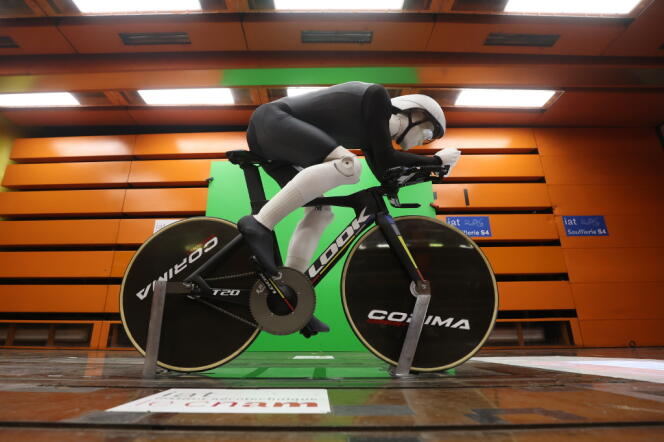


The Olympic gold medals of tomorrow may be won with a little help from physics. To show that science is the ally of athletes and their performances, the French Cycling Federation invited the press on January 31 to reveal the secrets of its riders. The occasion was a training session for the French women's track team, held at the center of the velodrome in Saint-Quentin-en-Yvelines (west of Paris), and in the middle of the nearby wind tunnel of the National Conservatory of Arts and Crafts, Saint-Cyr-l'Ecole (west of Paris).
The results presented are the fruit of several collaborations between the federation and research laboratories, mainly funded by the third Investments for the Future Program, with €20 million between 2019 and 2024, which has supported 11 projects and a dozen sports federations (including rowing, boxing, swimming, rugby and sailing).
"Some things are already mature and are being used, or will be," said Emmanuel Brunet, the federation's research and performance manager. "The aim is to seek perfection. We don't know if science will always achieve this, but we do know that the world's top-performing teams are doing scientific research," added Christophe Clanet, research director at CNRS and head of one of the programs.
So every detail counts to gain a few seconds here, a few watts there, or even a few centimeters – from the lubricant applied to the chain to limit friction and increase efficiency to the tires that must rub as little as possible, but not puncture too quickly. It goes right down to the fabric chosen for the cyclists' clothing on the track or for the time trial on the road. After wind tunnel tests, it was concluded that the best recipe is to use a different material for the arms and thighs, to limit the drag against which the rider can devote 90% of their power at high speed.
Another innovation has helped trainers drown in information: A box from start-up Phyling can be quickly fitted to a pedal to measure power in real-time during training or racing. It does so 200 times per second, compared with one or two times with previous models. This enables researchers to distinguish between leg power in push or pull mode. This information is used by biomechanists, physiologists and physicists to determine an athlete's ability to produce a certain level of power, depending on pedaling frequency, speed and fatigue.
Caroline Cohen, a teacher and researcher at the Ecole Polytechnique, uses it to predict the best strategies for track racing: Which relay runner to choose? At what point on the track should the relay take place?
You have 52.98% of this article left to read. The rest is for subscribers only.
